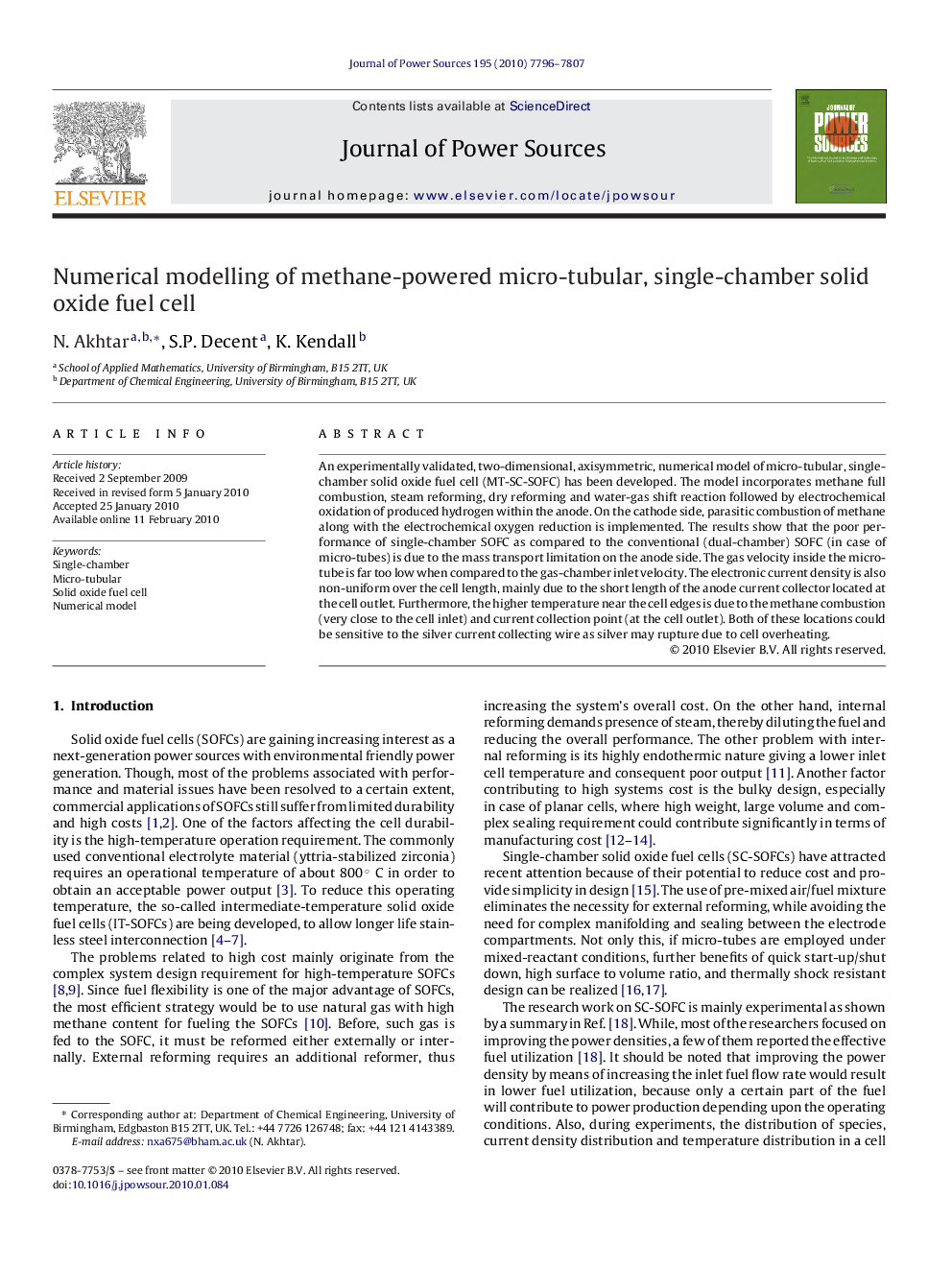| Article ID | Journal | Published Year | Pages | File Type |
|---|---|---|---|---|
| 1289795 | Journal of Power Sources | 2010 | 12 Pages |
An experimentally validated, two-dimensional, axisymmetric, numerical model of micro-tubular, single-chamber solid oxide fuel cell (MT-SC-SOFC) has been developed. The model incorporates methane full combustion, steam reforming, dry reforming and water-gas shift reaction followed by electrochemical oxidation of produced hydrogen within the anode. On the cathode side, parasitic combustion of methane along with the electrochemical oxygen reduction is implemented. The results show that the poor performance of single-chamber SOFC as compared to the conventional (dual-chamber) SOFC (in case of micro-tubes) is due to the mass transport limitation on the anode side. The gas velocity inside the micro-tube is far too low when compared to the gas-chamber inlet velocity. The electronic current density is also non-uniform over the cell length, mainly due to the short length of the anode current collector located at the cell outlet. Furthermore, the higher temperature near the cell edges is due to the methane combustion (very close to the cell inlet) and current collection point (at the cell outlet). Both of these locations could be sensitive to the silver current collecting wire as silver may rupture due to cell overheating.
